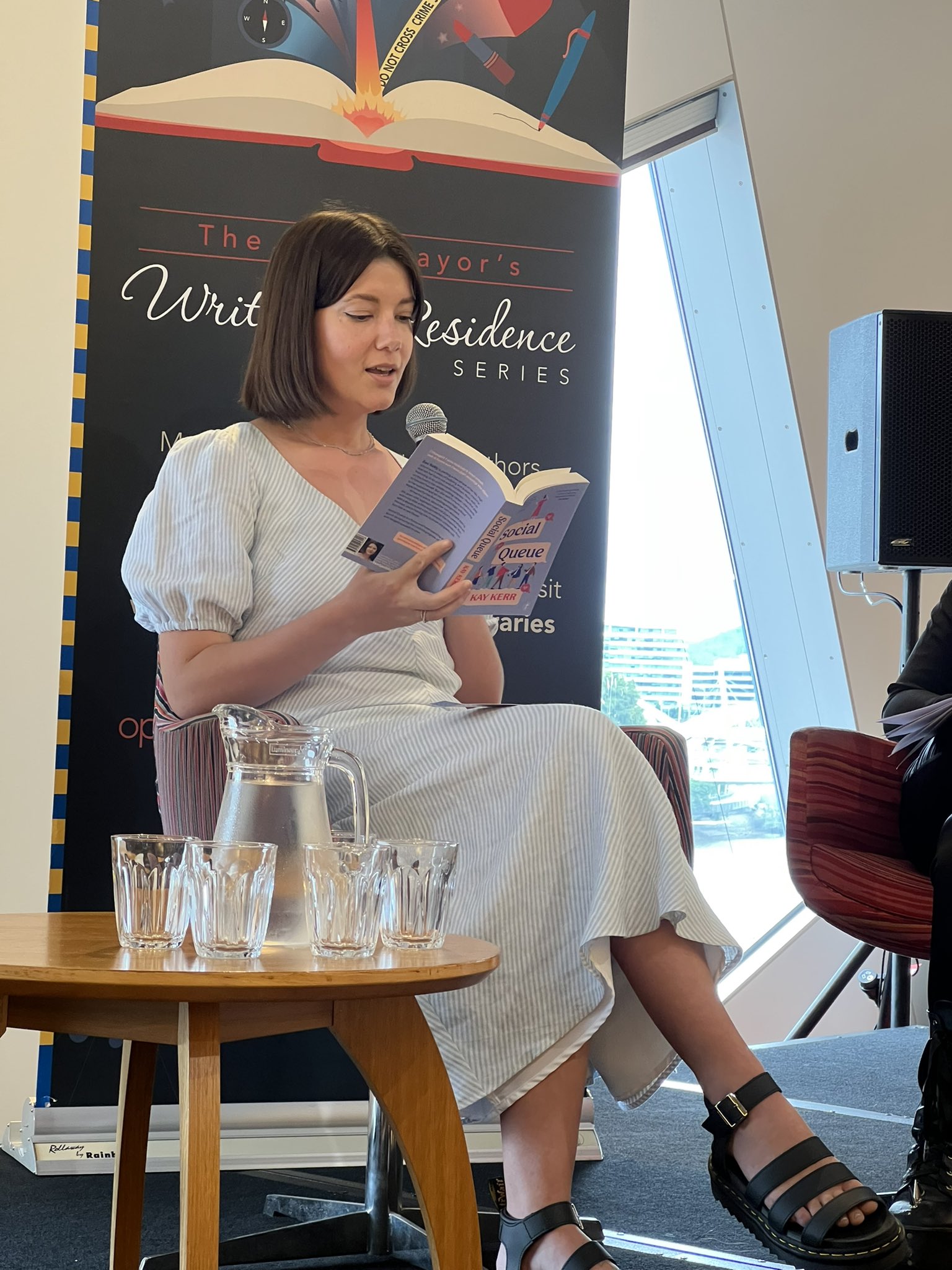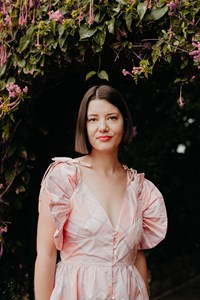Issue 125
Term 2 2023
Love and Autism
Kay Kerr is an autistic author and journalist from the Sunshine Coast, Queensland. Her latest book, Love & Autism, is out now.
Love and Autism is your third book and the second book you’ve written covering romance and attraction. What drew you back to the subject?
I love love. I grew up loving rom-coms, reading stories that had romance in them. I think there’s also an element of being drawn to relationships of all types, communication styles between people, whether that’s family relationships, romantic relationships, friendships. Autistic people are told that we have communication deficits, so I’m really interested in examining communications between people through that lens.
Then, the more I sort of explore that area, the more I realise and understand that autistic people have a different way of communicating, but not a lesser way of communicating. There is research around this idea of ‘the double empathy problem’, which basically outlines that communication with autistic people needs to be looked at a little differently.

Author and Journalist Kay Kerr
It is this two-way street, and non-autistic people probably have to come to the table a little bit more in terms of learning to communicate in a style that works for autistic people. Autistic people often put in so much effort to communicate in a neurotypical way so that they are understood and can have those connections, those relationships, and it should really go both ways.
The book tells five true stories of neurodivergent life and love. Earlier this year you tweeted, ‘When so much of what is written (and shown on screens) is looking from the outside in, I want to share #ActuallyAutistic stories through the lens with which I see them – not as other but as kin.’ Can you tell us a bit more about what that means to you?
I think just speaking in really general terms about the level of understanding around autism in our culture, there still seems to be quite a limited scope of what people perceive autism to be. It is often this narrow window, a fraction of the full picture of the autism spectrum as a whole. I think by having five stories as opposed to writing just my story about my life, I’ve been able to represent five lives – and they’re all vastly different. By weaving these stories together, I feel like it gives readers a chance to see difference in these experiences, but also the similarities and the way that autism can present for different people based on the different circumstances of their lives.
So much of what autism is for me and for so many people is the inner workings that happen at a level that people aren’t necessarily going to be able to see, like the way we process and move through the world at an emotional and intellectual level. When people think of autistic people they might think of meltdowns or stimming or those outward presentations. These, of course, are real and valid, and part of being autistic as well for a lot of people. But exploring the feelings and what happens internally for autistic people helps bridge a gap in understanding for readers. I hope it also makes autistic or neurodivergent people who read it feel affirmed and represented.
What do you hope that a young adult audience might find in your writing?
Autistic people will regularly flag with me that their teen years were some of the trickiest times, and not just in the teen sense, but also for reasons specific to being autistic. It’s such a time of transition, and transitions are really tricky. Social hierarchy in traditional schooling can be really hard to navigate, especially when others are so attuned to any sense of difference in the way you exist. I wanted to explore all of the feelings and the things that happen in that time of change.
I hope [Love and Autism] makes autistic or neurodivergent people who read it feel affirmed and represented
In writing my first book, I wrote myself towards my own diagnosis – I was unpacking and processing all of my own feelings about how I moved through the world and what I struggled with. That was a big part of why I set it at the end of Year 12 – those last three or four months, where you have exams, graduation, schoolies.
All this in one little period of time felt like such a distilled version of what is hard about being a teenager, and specifically an autistic teenager.
So I ended up getting an autism diagnosis as I was completing my first book. I think that transitional time period is always going to be a major draw for me to write about. I want to make sure that people who read my books feel affirmed and feel like they’re not alone in that time, because I definitely felt like I was very alone in those years. So, I would love to think I can provide a little bit of comfort for readers there.
How did you find the stories that you’ve included in the book?
I found the stories through a range of methods. I wanted to make sure that the people that were involved were really comfortable and only sharing as much as they wanted to share because it’s a very vulnerable place to be in, to share your life in such an open way.
I reached out to one person over social media and a few others came through an autism support agency that I’ve done a bit of work with. I approached someone else based on an article they had written for SBS, and then another is a friend I made in the writing community when I published my first book. And, finally, I reached out through the producers of Love on the spectrum to ask one of the participants to be involved.
It feels like it all fits now, but it was very much all fluid and up in the air until it was all coming together. The process filled me with anxiety at the time, but now I’m so happy with how it came together because it represents such a wide range of people and experiences.
As our society continues to have conversations about diversifying the voices and perspectives in our storytelling, what role do you see school library staff playing in educating young people when it comes to not just neurodiversity, but diversity in general?
I’ve actually just started my Master of Children’s Librarianship and I’m the biggest fan of school libraries. I can still vividly picture my primary school library. It was incredible. It had this sunken reading den that the librarians and the staff always decorated in different themes. As a lot of neurodivergent people will attest, the library is a safe space in a lot of ways. It’s sensory friendly, airconditioned, quiet. And full of the most incredible books, with so much to explore, whether that was novels and fiction or whether that was exploring interests in an animal that I was really interested in, or a country or whatever. The library just provided respite.
I think library staff have this very, very unique role in being able to place the right stories in the right hands. That’s something that can’t be replaced by technology or anything else. It has to be humans in that space, connecting with young readers, because I do think that the right book can change your life. The right book at the right time can change your life.
Seeing different perspectives is so important in terms of giving readers the building blocks towards empathy and understanding. I think that school library staff have a role that I don’t think anybody else can really fill. They put diversity on the shelves and school libraries seem to me to be at the forefront of telling diverse stories and making sure those stories are in the hands of readers, which is really positive.
The right book at the right time can change your life
Do you have any words of wisdom for neurodivergent young people who might be struggling with love in the same ways that you have?
The world can often tell you that you’re doing things wrong, because there’s a dominant way of doing things. In that context, loving yourself and self-acceptance are radical acts. I hope that young people who might be struggling in any way can see how much strength there is in our differences, because when we figure out how to lean into those differences and to celebrate them, everything just seems to get a lot easier and a lot better.
